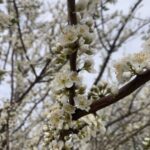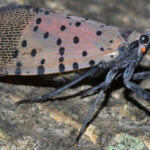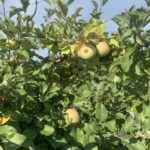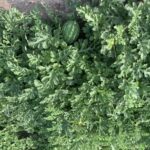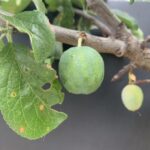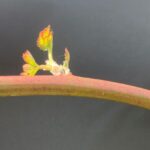The Purdue Meigs Horticulture Facility in Lafayette, Indiana just south of campus is looking lively this time of the year. All our fruit crops and trees have begun development. I know last year I said we had a warm winter and early spring but this year was much warmer and earlier. I was working fields[Read More…]
Plums
The Spotted Lanternfly is an invasive planthopper native to East Asia. It was introduced to the US in 2014 in Eastern Pennsylvania and has since spread to 13 other states including Indiana. The Spotted Lanternfly has 70+ host species including the invasive Tree of heaven (Alianthus altissma), grapes, apples, stone fruit, vegetables, hops, walnuts and[Read More…]
At the Meigs Horticultural facility, we have been busy completing cover sprays and with crop maintenance. The total rainfall at Meigs this June has totaled a half inch. We need rain to help with fruit development. As a result of very little rainfall, we’ve had very little disease pressure. The last harvest of our Strawberries[Read More…]
At the Meigs Horticultural facility on April 24th we experienced freezing temperatures from 2 am until 7 am, with a low of 26.8 degrees Fahrenheit for one hour. The damage to fruit crops on the farm is scattered depending on varieties. A rough estimate would be 10% cold damage on the crops. The growth stages[Read More…]
The plum curculio (Conotrachelus nenuphar) is a small “snout” beetle (also known as a weevil – one of my favorite beetle groups!) that will feed on apples, peaches, pears, plums, and cherries. Both adults and larvae have chewing mouthparts and can damage fruits; adults by feeding and laying eggs in newly set fruit and larvae[Read More…]
In just two weeks there has been significant bud development on our fruit trees here in Lafayette, IN. Our Shiro Plums are in full bloom and the bees are busy pollinating these trees. There is one Apricot and some early season Apple trees in our mixed variety blocks that are also in full bloom. All[Read More…]
